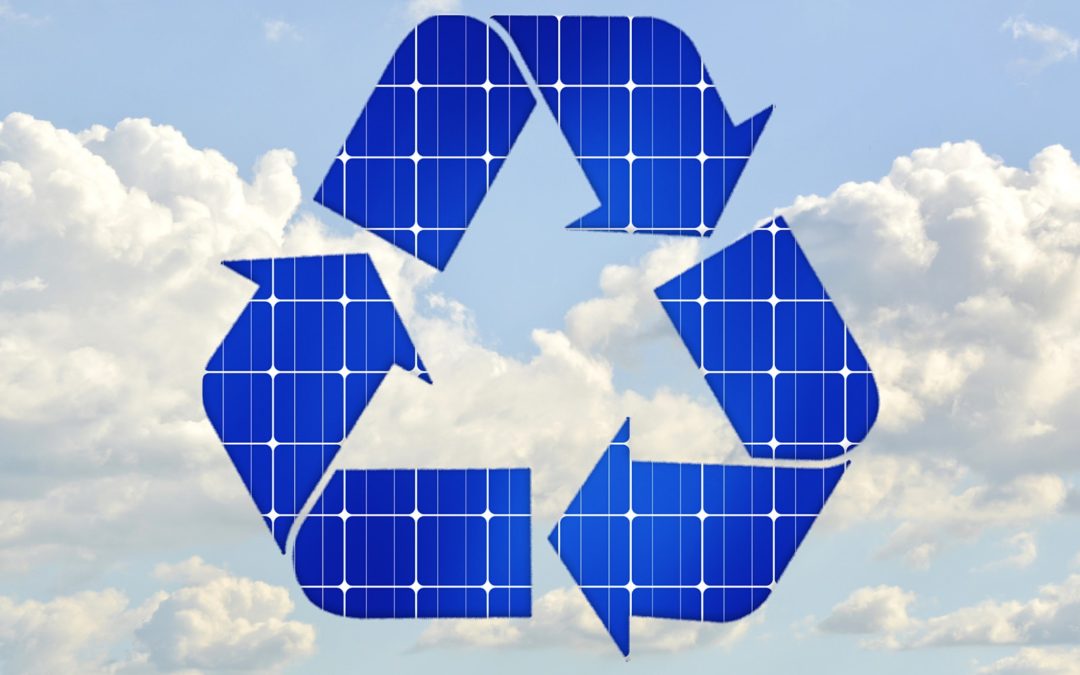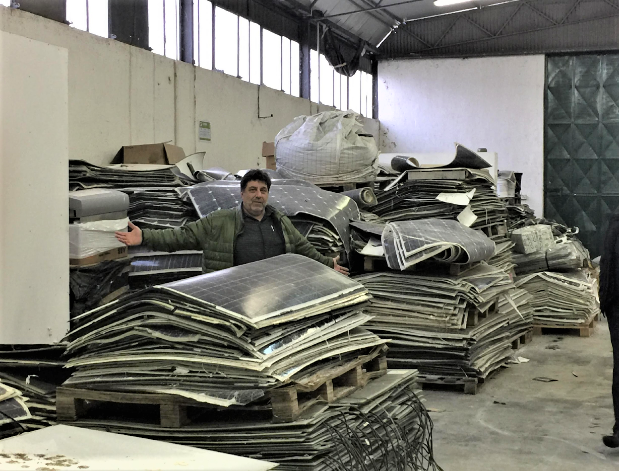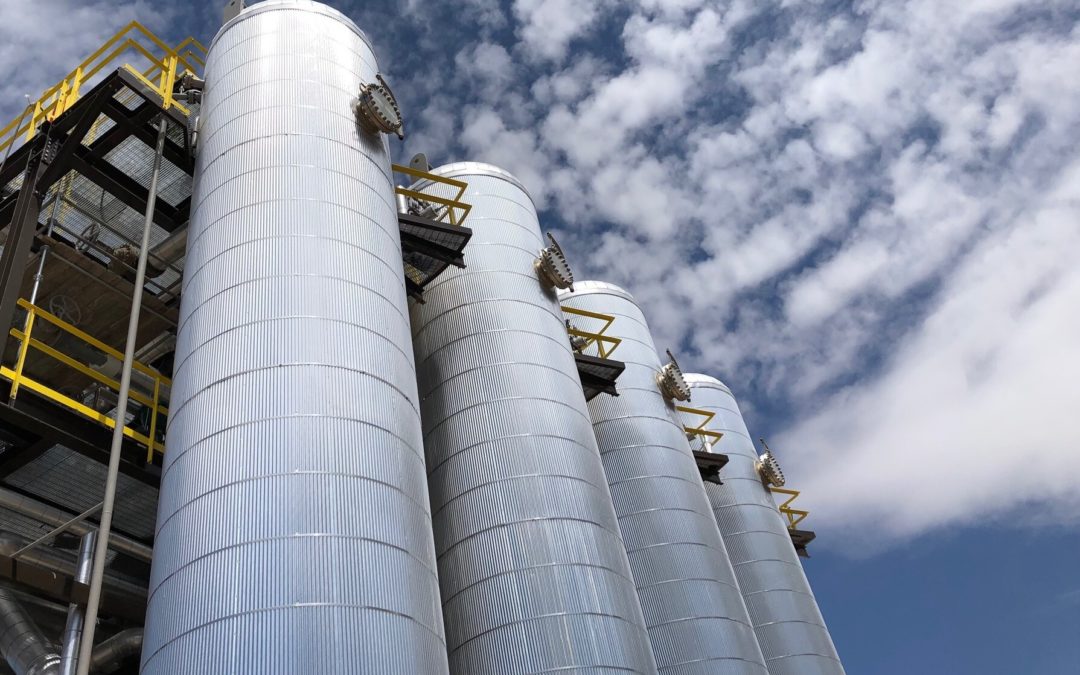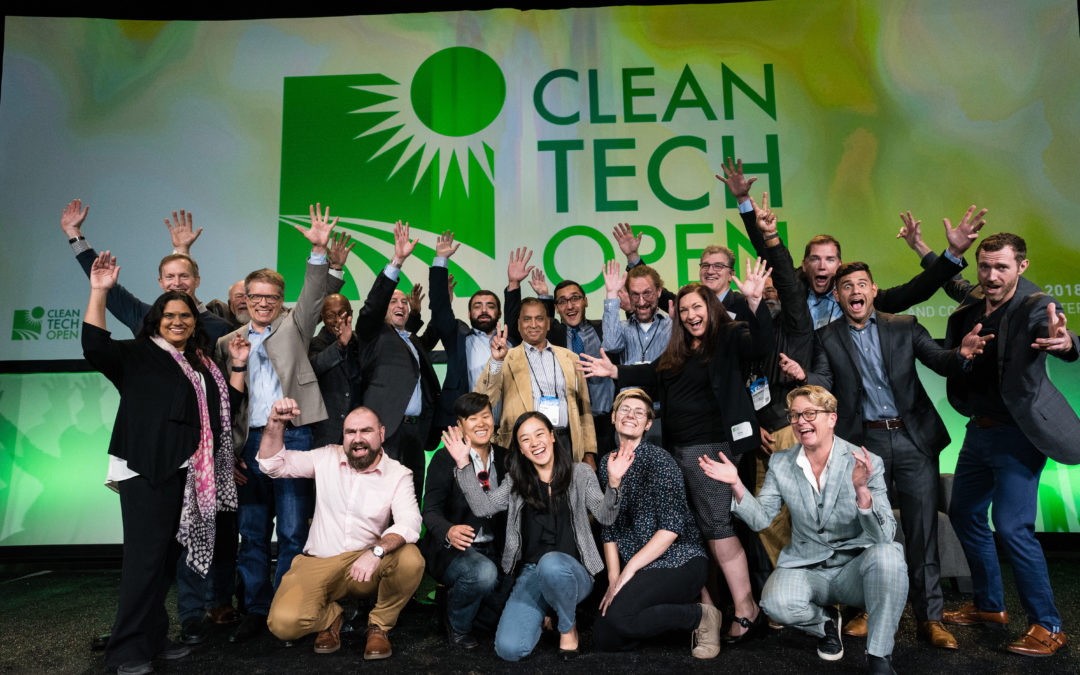
Green Products Creating Disposal and Recycling Challenges
What is one of the leading threats to the spread of solar PV installations in the US? The lack of a good way to deal with old or broken panels from existing installations. Fifty thousand tons of these are piling up in warehouses in the absence of a better solution. In Europe, 95% of these old panels are recycled, but in the US less than 10% are. There is a similar problem with lithium-ion batteries. End-of-life issues with many of the popular green products are a growing problem and were the focus of our Feb. 25 MeetUp with three great panelists. It clearly was a hot topic as one of our largest crowds tuned into the event.
Sam Vanderhoof of RecyclePV Solar in Nevada City laid out some stunning realities of the relatively unknown dark side of the solar PV business. He is working to establish a major recycling facility using some modified German technology to reduce the cost of recycling panels and improve throughput. One of his biggest contributions was in just describing the scale of the problem. Old panels are classified as hazardous waste under the RCRA law in the US (even though the content of the offending toxic components is slight) and cannot just be landfilled. However, for lack of a better solution, some are just busting up the old hardware and sneaking it into landfills anyway. Not good. They should be picked up by a hazardous waste hauler and disposed of properly, but that costs $5,000 per truckload. Also not good. By 2050 there could be over 50 million tons of PV waste.
Panels are supposed to have lifetimes of 25-30 years, so where are all the discarded panels coming from? It is not because of panel failure. Sam said about half are from weather-related damage—trees falling on them, hurricane winds blowing them off rooftops, and getting hit with hail as examples. Another 36% are the result of fire damage on the structures on which they were installed. Less than 9% were due to some electrical failure.
Sam believes the best solution is recycling. It could be a $10 billion market by 2050. Some of the panels can and should be refurbished and used again, although the steady drop in new panel prices and the cost of collecting and shipping used panels make the economics of this option poor. Sam is focused on tuning existing commercial machines to tear apart the old panels and separate the wastes into various value streams. Probably the best thing to recycle is the glass if it can be done in a way that it is clean and not contaminated by other parts of the panel. Utlimately, his advice is to require panels to meet standards of recyclability to make the process easier, as is now done in Europe.
Paul Gau of California Electronic Asset Recovery (CEAR) out at Mather Field expanded the conversation to consider what to do with all the lithium-ion batteries that are accumulating. CEAR handles all types of electronic waste, but some of the toughest issues are posed by these batteries. CEAR handles 15,000 tons of electronic waste per year and is one of the largest of its kind in Northern California, with 80 employees and 20+ years in business. He has developed a machine to break up the e-waste with centrifugal force rather than cutting blades and believes this yields a better stream of reusable materials.
Heidi Sanborn of the National Stewardship Action Council (and also a SMUD Board Member) talked about their efforts to promote regulations and best practices to eliminate waste in a number of industries. Their mission is to make a completely circular economy, with all wastes becoming feedstock for another industry so that ultimately nothing ends up in a landfill. She also is the volunteer chairman of the California Statewide Commission on Recycle Markets and Curbside Recycling. She clearly is very busy. She is an advocate for adding disposal fees to products to encourage recycling and the redesign of products to ensure they are recyclable. She cited two good examples of how this creates business opportunities. First, Aquafil opened a carpet recycling plant in Woodland with 50+ employees that can process 36 million pounds of old carpet per year. In 2010, the state passed a law to collect assessments on carpet and then use the proceeds to incentive collection and recycling. The Aquafil plant extracts Nylon 6, polypropylene and calcium carbonate from carpet, each of which is used to make another product. Second, Aero Aggregates is taking curbside recycled glass, which because it is mixed and often contaminated is hard to recycle into new containers, and instead processes it into a replacement for construction aggregates used as road material. This glass aggregate is 85% lighter than the usual stone aggregates used for backfill.
Applying these approaches to the PV panel issue, Sam estimated that adding $2-4 to the price of all panels sold would provide enough money to incentivize the proper recycling of solar panels IF there were requirements for all panels to be inherently recyclable. The difference is that in the US, recycling is now costing $15-45 per panel while in Europe, with the recyclability requirements, the cost is 90 cents and falling.
If you appreciate what we do, buy us a cup of coffee here. We are a nonprofit and depend on your generosity. Be sure to join our future events such as meetups and our weekly Perspectives events to keep up on all the cleantech happenings in our area. You can also sign up for our Newsletter to get notified of all future events and read about the discussions of past events.
Upcoming Events

ABOUT THE AUTHOR
Gary Simon is the Chair of CleanStarts Board. A seasoned energy executive and entrepreneur with 45 years of experience in business, government, and non-profits.
CleanStart Sponsors
Weintraub | Tobin, BlueTech Valley, Revrnt,
Moss Adams, PowerSoft.biz, Greenberg Traurig, Momentum,
College of Engineering & Computer Science at Sacramento State











